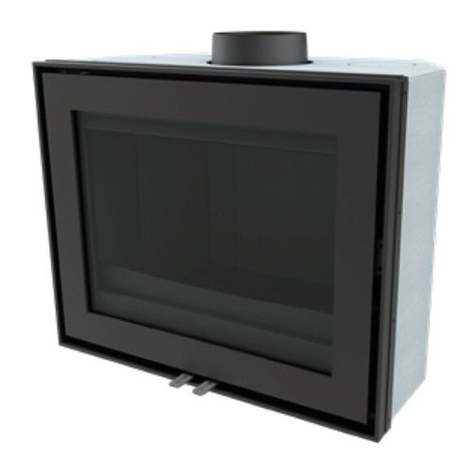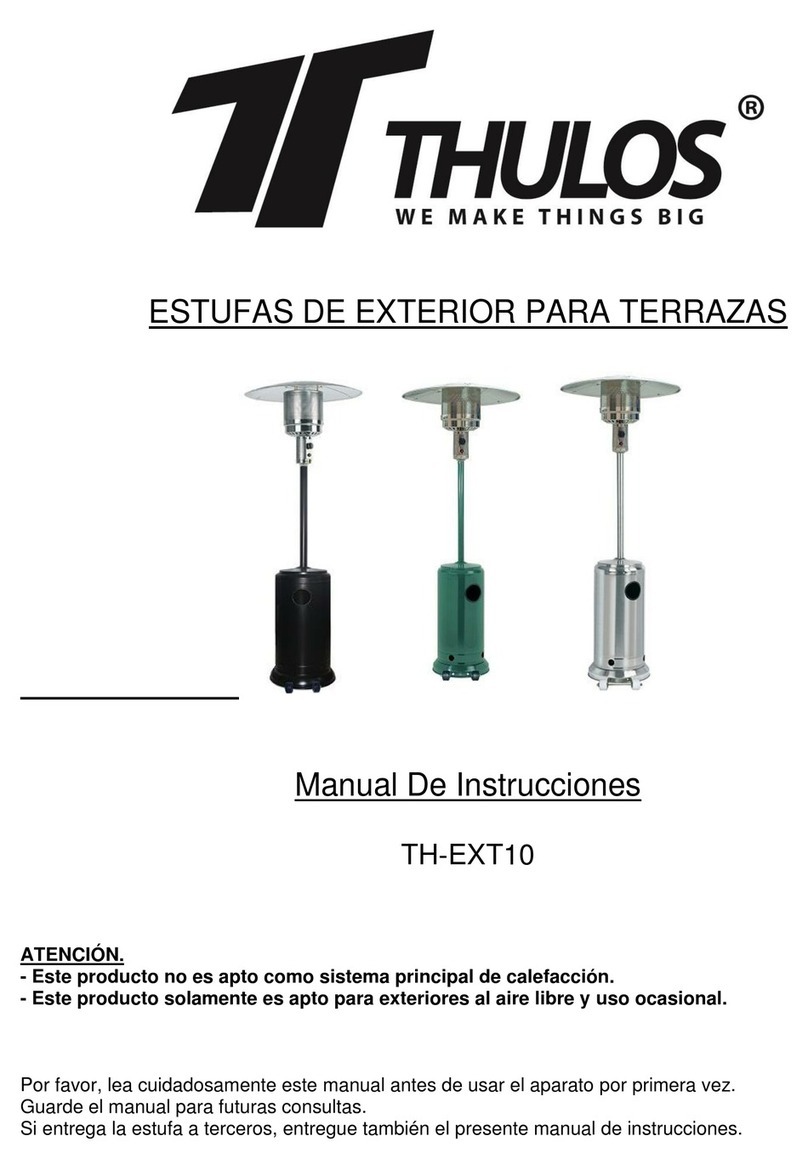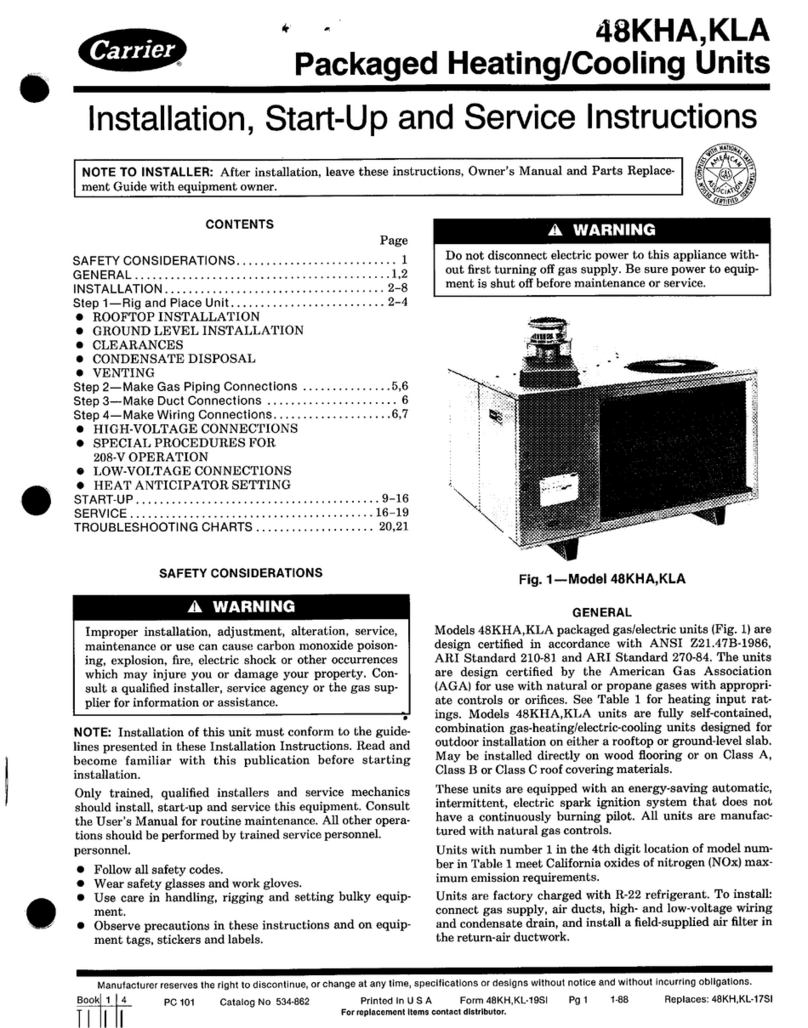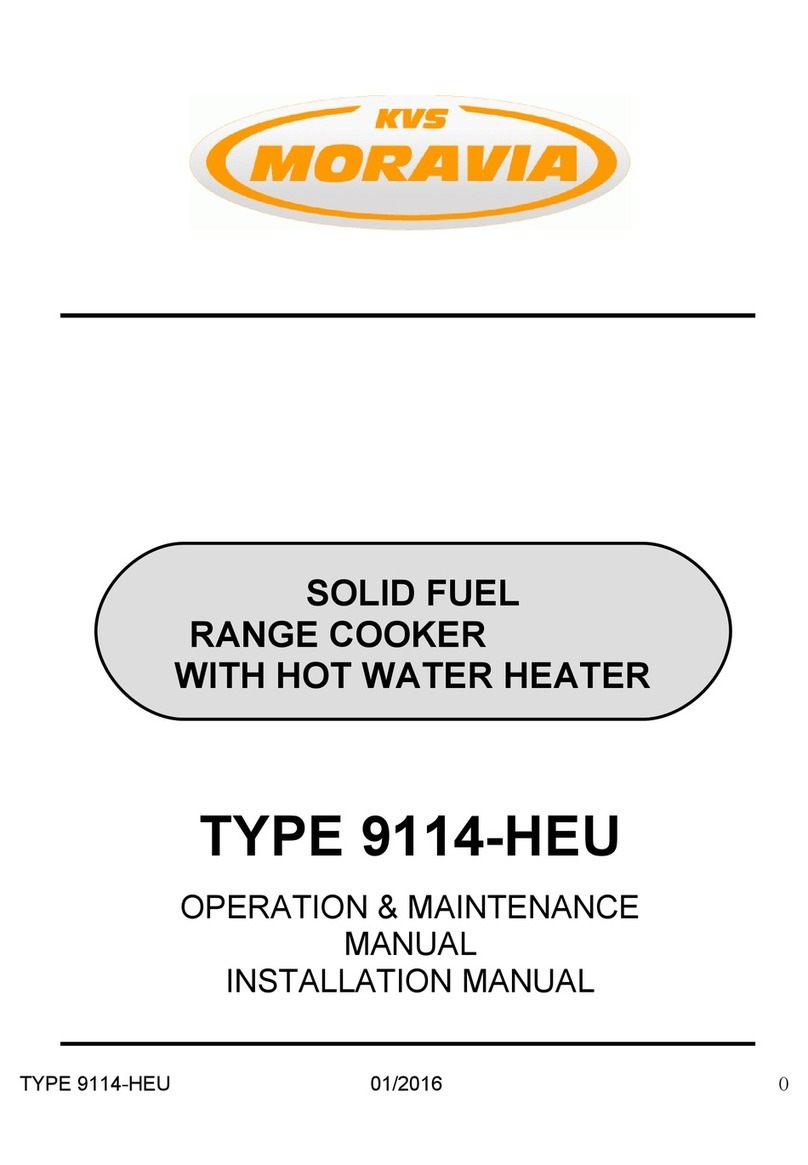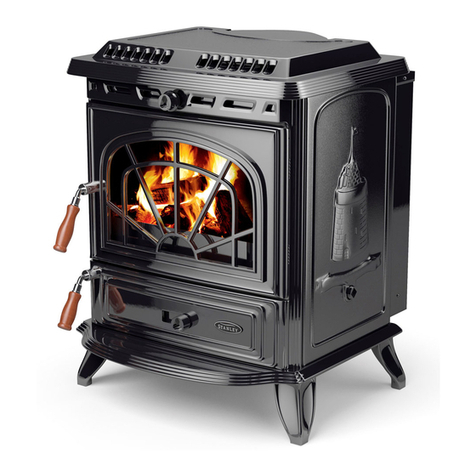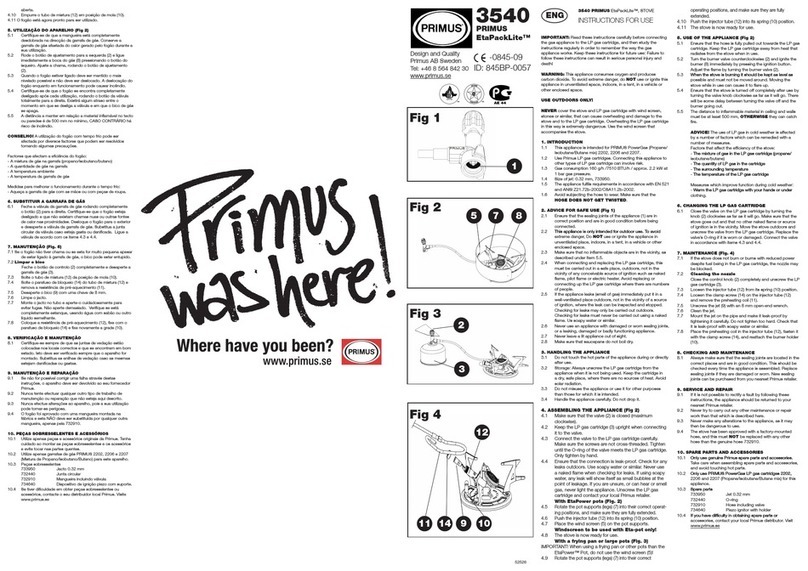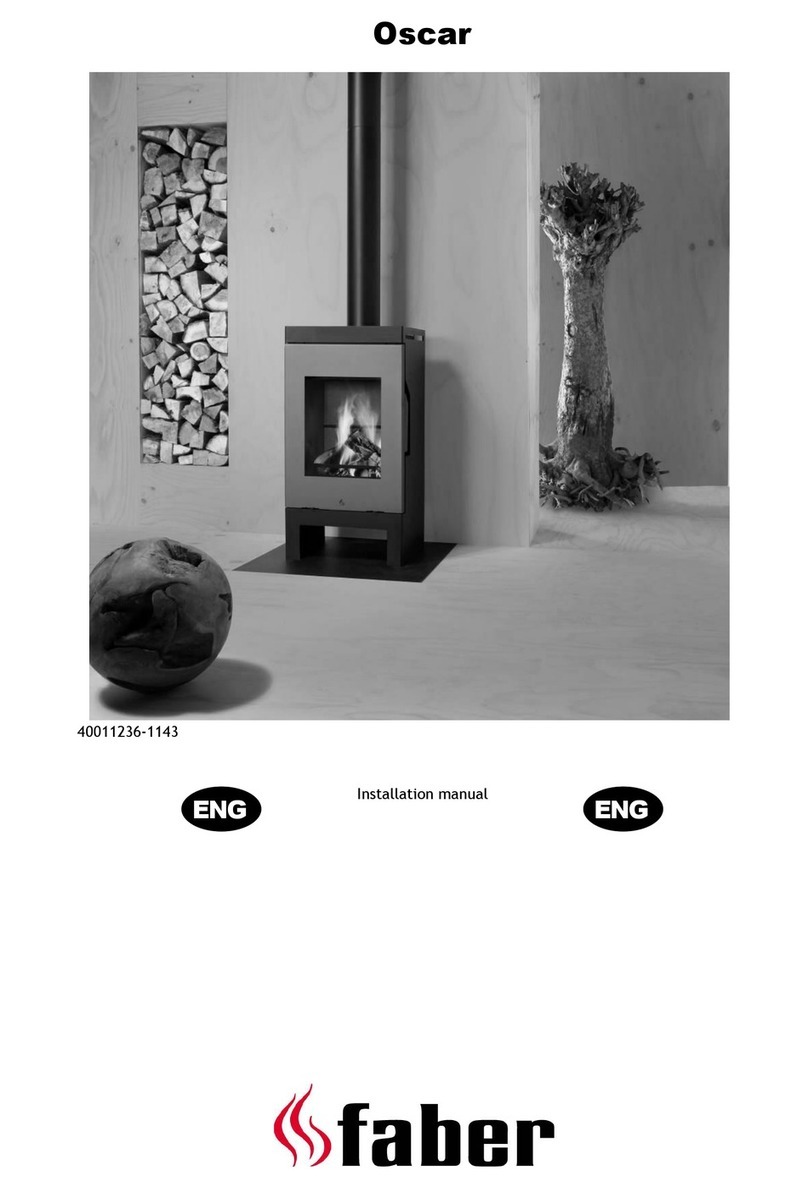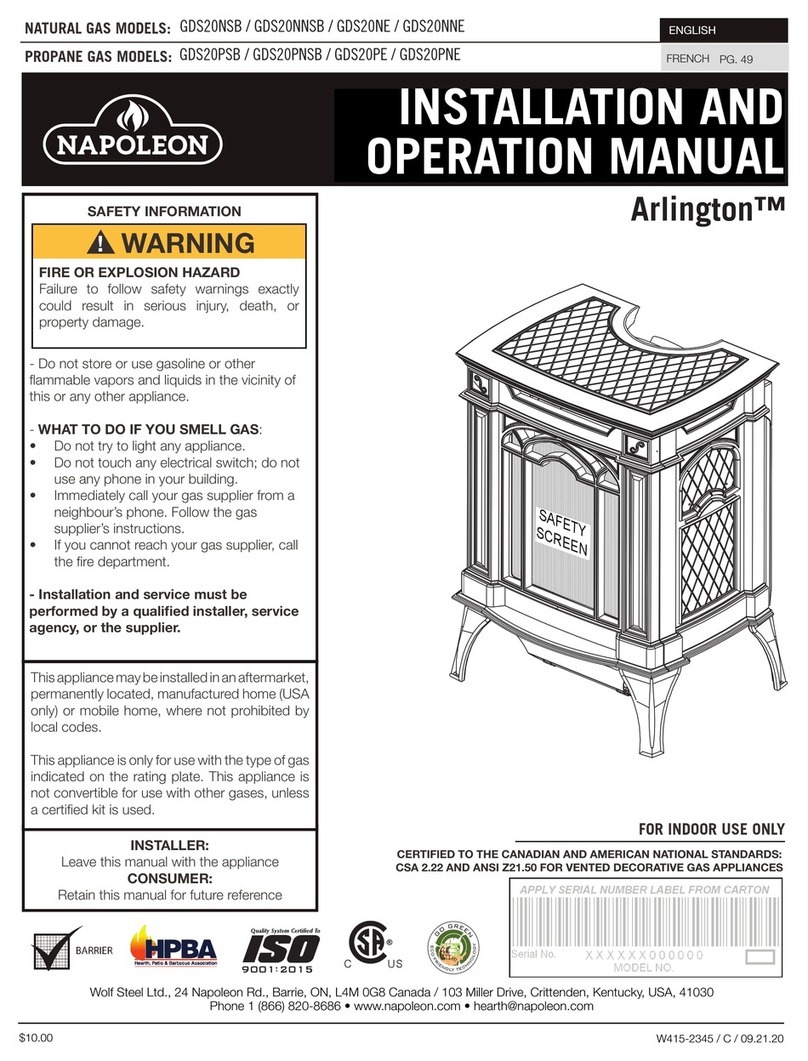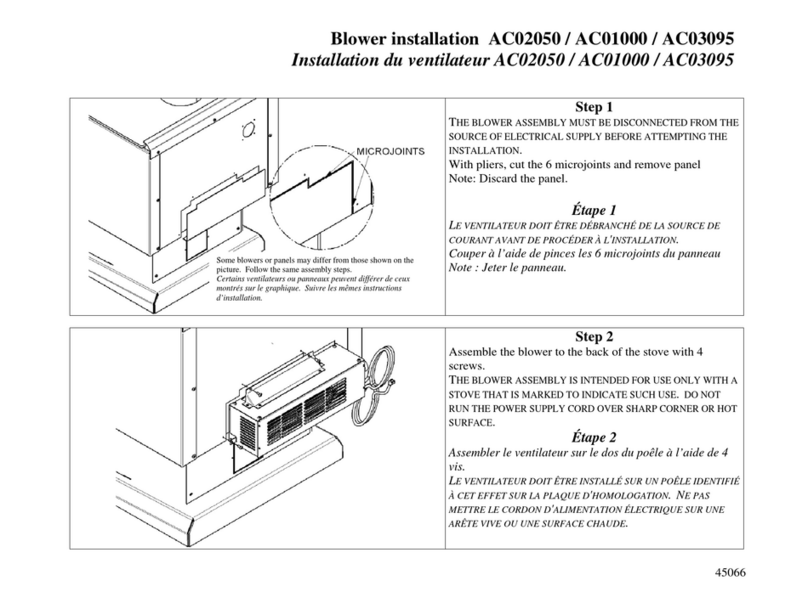730/03.05.23/V2
P a g e | 12 of 29
Ecco Stove | Foster House | 2 Redditch Road | Studley | B80 7AX | United Kingdom
For all patents –See Addendum
18. FLUE CONNECTION AND FLUE LININGS
The flue outlet on the stoves top is 150mm+ and accepts a 150mm stove pipe
which must be bedded into the outlet with fire cement for a gas tight seal.
Minimum 1mm thick metal pipe). As metal expands at a difference rate to
Silicon Carbide it is necessary to have an expansion joint where the flue
connects that can be achieved with a flat glass ceramic rope tape.
The nominal flue outlet of the Ecco Stove is 150mm diameter for which a
150mm flue liner insulated around within the masonry chimney with perlite
grains or similar or insulative appropriate wrap is strongly advised, or a
suitably insulated pre-fabricated twin wall stainless steel flue system.
Any single wall pipe joints must be self tap screwed and jointed with fire
cement.
Flue’s up to 9m in height are adequate in 150mm inner diameter.
Flues over 9m in height should be 175mm in the diameter.
High temperature hot face inner linings or coatings are suitable materials but ideally with a maximum
flue area of 225 x 225mm.
Pumice hot face linings with insulation or leka pelletts are suitable.
Under no circumstances should the Ecco Stove be connected directly to clay linings within chimneys,
unless those clay liners have a hot face lining fitted within, in order to reduce condensation within the
chimney flue.
19. CLEANING AND MAINTENANCE
Flue ways within the Ecco Stove should be cleaned two monthly in continuous combustion for which the
stove should be let out (not burning).
Cleaning access points are located on the stoves top sides (4 discs) which must be lifted horizontally to
access the vertical flue ways (2 each side).
After brushing down (and up) the deposits can be scraped or vacuumed out by removing the cleaning
plugs located on the front of the bottom section (2 discs).
The first section of flue pipe vertically off the appliances top flue outlet MUST include a flue cleaning
access within 200mm of the stoves top.
Clean down through this into the stoves top; brush along the top flue chamber beneath the flue outlet
and vacuum out that chamber by sliding the flexible brush or vac hose to left and right.
Seasonal Use. During a period when the stove will not be fired for example, during the summer
period, leave the ash pit door open, 2mm, to minimise condensation build up within the stove.
Clean the flue ways as described in the previous paragraphs (21. Cleaning and Maintenance) and
clean out both the ashtray and fire box. You may oil the outer paint surface with a light mist of
releasing oil, similar to WD40 and leave for the next heating season.
Check the rear back baffle boards and replace if cracked or broken.
Check all seals are fixed firmly in place on the door; ash pit front and cleaning plugs.





















